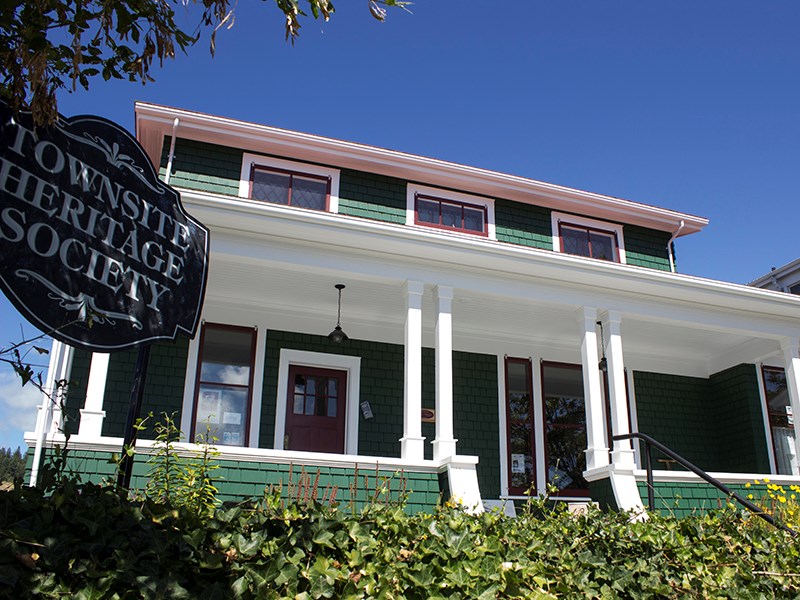Powell River’s historic Townsite has quickly become one of the city’s most popular neighbourhoods, with more people buying homes there for their heritage values than ever before.
According to several community advocates of heritage preservation, this bodes well for the future of the neighbourhood and its recognition as a historic district by the federal government. Still, the neighbourhood faces challenges.
“We’ve really reached the tipping point of appreciation for the architecture in Townsite, for its character rather than a place being appreciated solely as an inventory of cheap homes that could then be turned into something else,” said Townsite Heritage Society director Ann Nelson.
While the federal government recognized the neighbourhood in 1995 as a national historic site of Canada, that designation does not bring any protection for its historic architecture.
Nelson said it is up to city government to pass bylaws to protect the neighbourhood, and while some direction is laid out in the Townsite section of Powell River’s sustainable official community plan, the residential area is not protected as a heritage-conservation zone.
Nothing is stopping someone from purchasing a home on Maple Avenue, demolishing it and building a home with infill architecture, said Nelson.
However, over the past decade Townsite has continued to attract buyers who are intrigued by its homes and interested in buying something with character that can be restored, she said.
By virtue of that, it is “just pure luck” that more heritage homes have not been lost, according to City of Powell River councillor and Townsite resident Karen Skadsheim.
Skadsheim has been a vocal proponent of seeing Townsite’s heritage values preserved. While parts of Townsite are covered by a development-permit area, meaning that if someone wanted to change the way a building looks on the outside they would have to apply to city hall to have plans approved, most of the residences are not inside the permit area. According to Skadsheim, that puts heritage value at risk.
“We’re lucky we’ve had this sleepy Townsite here and we’re getting some new people lately and they are interested in preserving the heritage,” said Skadsheim.
With the cost of land in Metro Vancouver and the amount of redevelopment that spurs, that city is “losing a bit of its heritage every single day,” she said. “That could easily be Powell River.”
Skadsheim points out that, like Vancouver, City of Powell River does not have any bylaws that protect streetscapes and the West Coast Arts and Craft architecture of its homes.
“The thing that has attracted these people here is because there is so much heritage intact,” said Skadsheim. “We want to make sure it stays that way.”
City senior planner Jason Gow, also a Townsite resident, said that a decade ago when he and his family moved to the neighbourhood it was the charm of the homes that sealed the deal.
“I really appreciated how intact the neighbourhood was,” said Gow. “It was just an amazing feature and something that is appreciated by those who come from other places where that has been lost. I credit Townsite for the reason I’m here.”
The idea of bringing in regulations that tell homeowners what they can and cannot do with their homes is not a new fight, said Nelson.
More than 20 years ago Townsite Heritage Society was poised to work with city hall to create protection bylaws. At that time, before gutting the heritage preservation branch of the Ministry of Forests, Lands and Natural Resource Operations, the provincial government had a well-staffed department to help communities develop local heritage protection bylaws.
The society brought a speaker in to talk to neighbourhood residents about developing a conservation plan, but Nelson said he was sent packing having been “tarred and feathered.”
“You can’t blame people for being concerned,” said Nelson. “In hard economic times, people wonder what’s going to happen if their building is designated a heritage building or becomes located in a heritage development permit area.”
Nelson said while having a home inside a heritage area is seen by some as a restriction on the freedom to do what a homeowner wishes to do with his or her property, what communities that have created the zones have found is an improvement in sales.
“The reality is people are eager to be part of that process and have a home that is valued and valuable for its heritage,” she said.
Nelson also added that Townsite Heritage Society is primarily concerned with how homes look on the outside and how yards are landscaped.
“We don’t want to see such restrictive legislation put in place that a person cannot even change the way the stairs in their home are nailed together without referring to a document,” said Nelson.
She said while there are communities, such as Ladner, where bylaws have been set to be too restrictive, there are also others that recognize that while the building has historic value, it is also a family’s home.
“You have to give people the absolute latitude to do whatever they want inside their house, whatever their conscience tells them,” she said. “We may disagree and be heartbroken when we see someone change something that was intact for nearly 100 years, but homeowners need to be able to have a living space that inspires them.”
Gow said the city’s planning department will start work in the fall to preserve city-wide heritage, but he said at this point he is not sure what that will entail.
Nelson said whatever form the work takes, Townsite Heritage Society will continue to provide its local expertise on how homeowners are able to restore and renovate their homes in a sensitive manner and will continue to encourage Townsite homeowners to preserve the character defining exterior elements and streetscape.
“When it comes to understanding the aesthetics of the neighbourhood,” said Nelson, “we’re the best equipped.”



